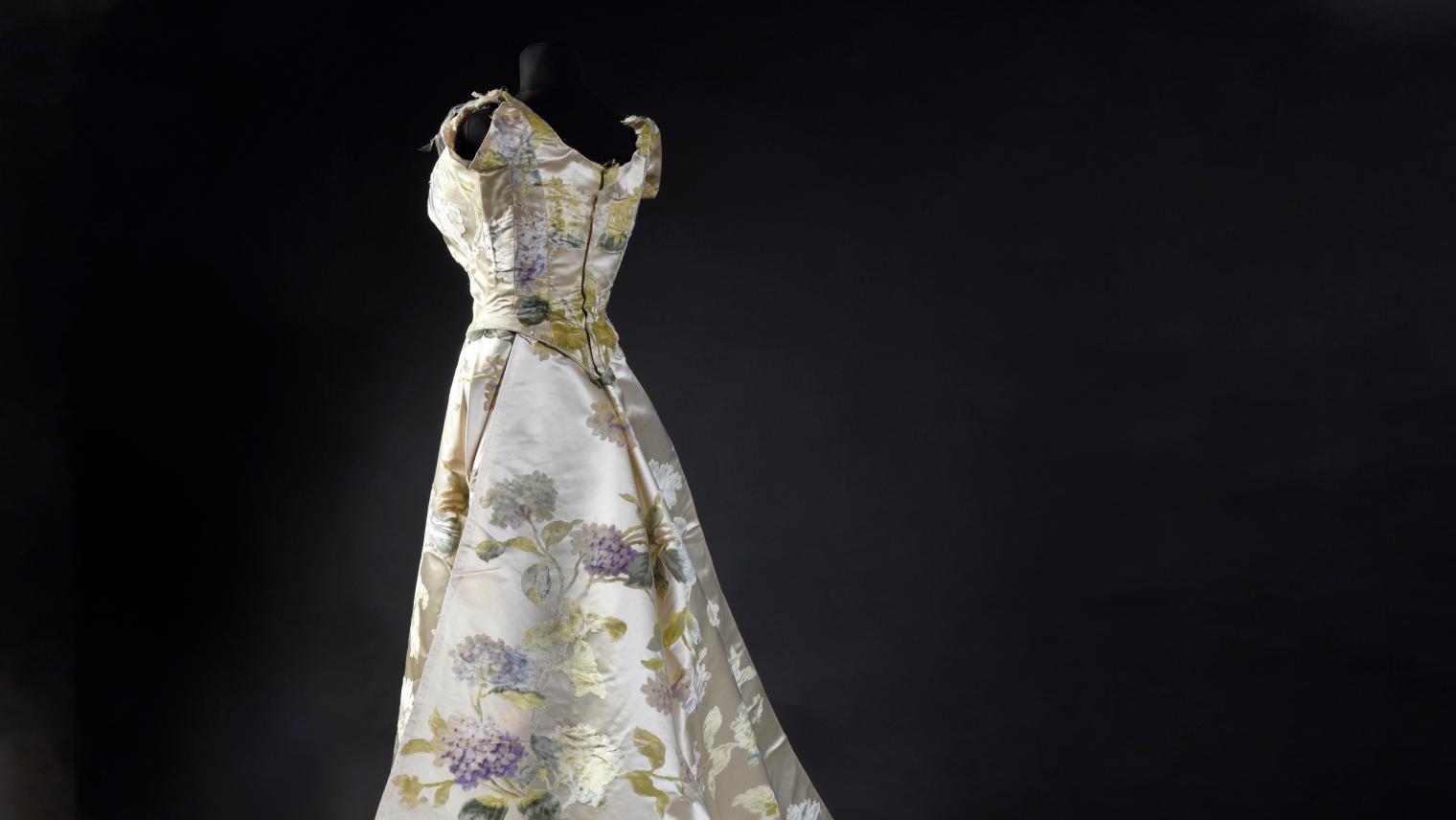As the Ancien Régime drew to its gruesome conclusion, French silk was in high demand and exported in great quantities. Lyon reigned supreme, but cotton mousseline soon replaced patterned silk and wallpaper replaced silk wall hangings. The silk industry had to adapt and innovate.
A Worth ball gown, c. 1900, ‘velours au sabre’ with satin background decorated with flowering hydrangeas, boned pointed bodice, sleeves and neckline originally edged with ruffled tulle. Hôtel Drouot, December 7, 2021. Coutau-Bégarie OVV. M. Maraval-Hutin.
Result: €10,948
The last years of Marie-Antoinette ’s reign and those of the French Revolution had one thing in common: a distaste for silk. However, it was short-lived. Aware of France’s dire economic straits, First Consul Bonaparte counted on the fickleness of fashion to breathe new life into the Fabrique lyonnaise, which brought the silk mills in the country’s second city together into one corporation. Napoleon continued supporting them after his coronation, issuing a decree stating that ceremonial garments as well as the decoration and furnishings of the Imperial House of France had to be made of Lyon silk. Europe soon followed suit. Thousands of looms hummed to fill an endless flow of orders for luxurious patterned or solid fabrics. Production and exports grew at a steady pace and before long Lyon won the envied…
com.dsi.gazette.Article : 43006
This article is for subscribers only
You still have 85% left to read.
